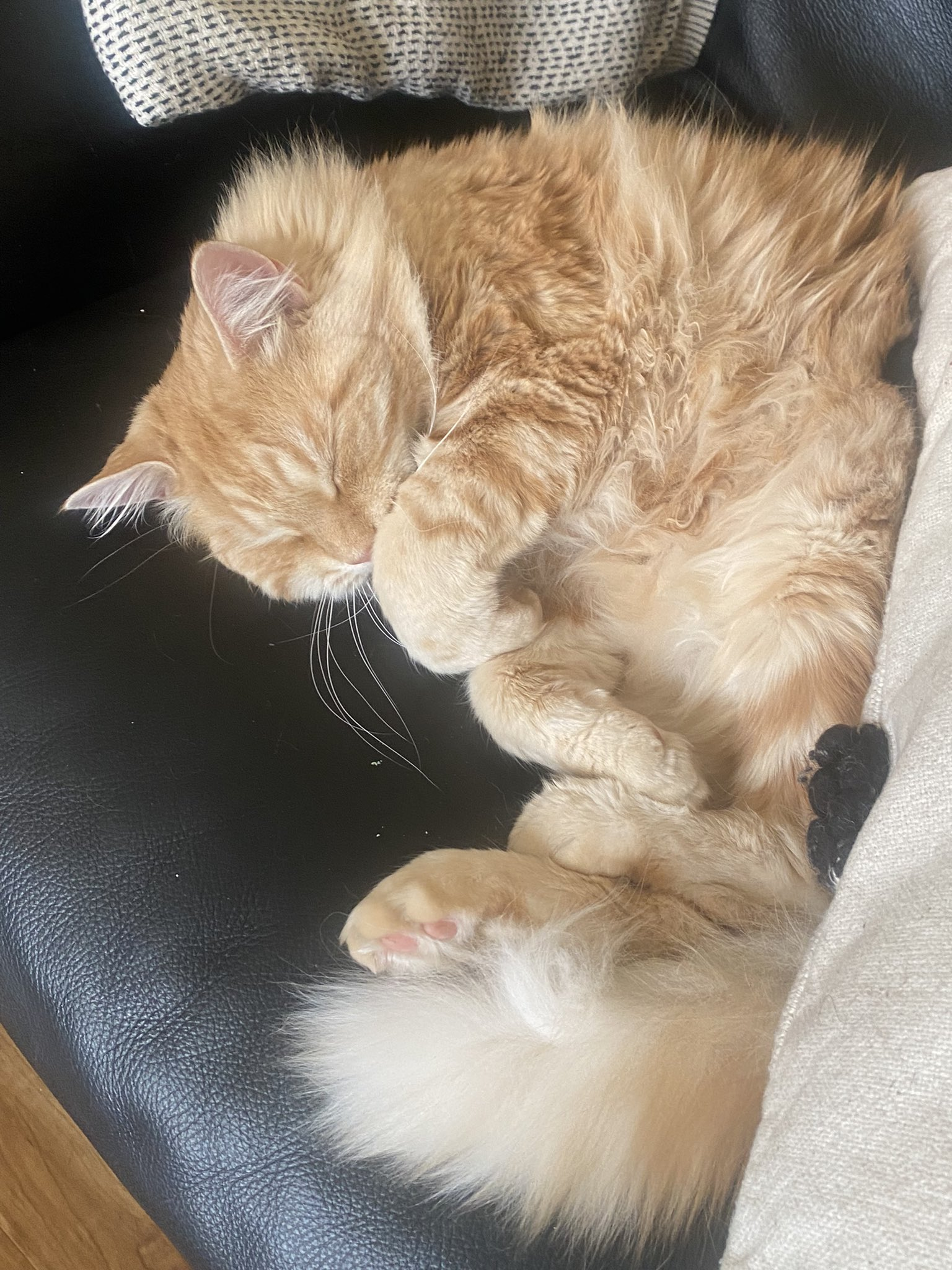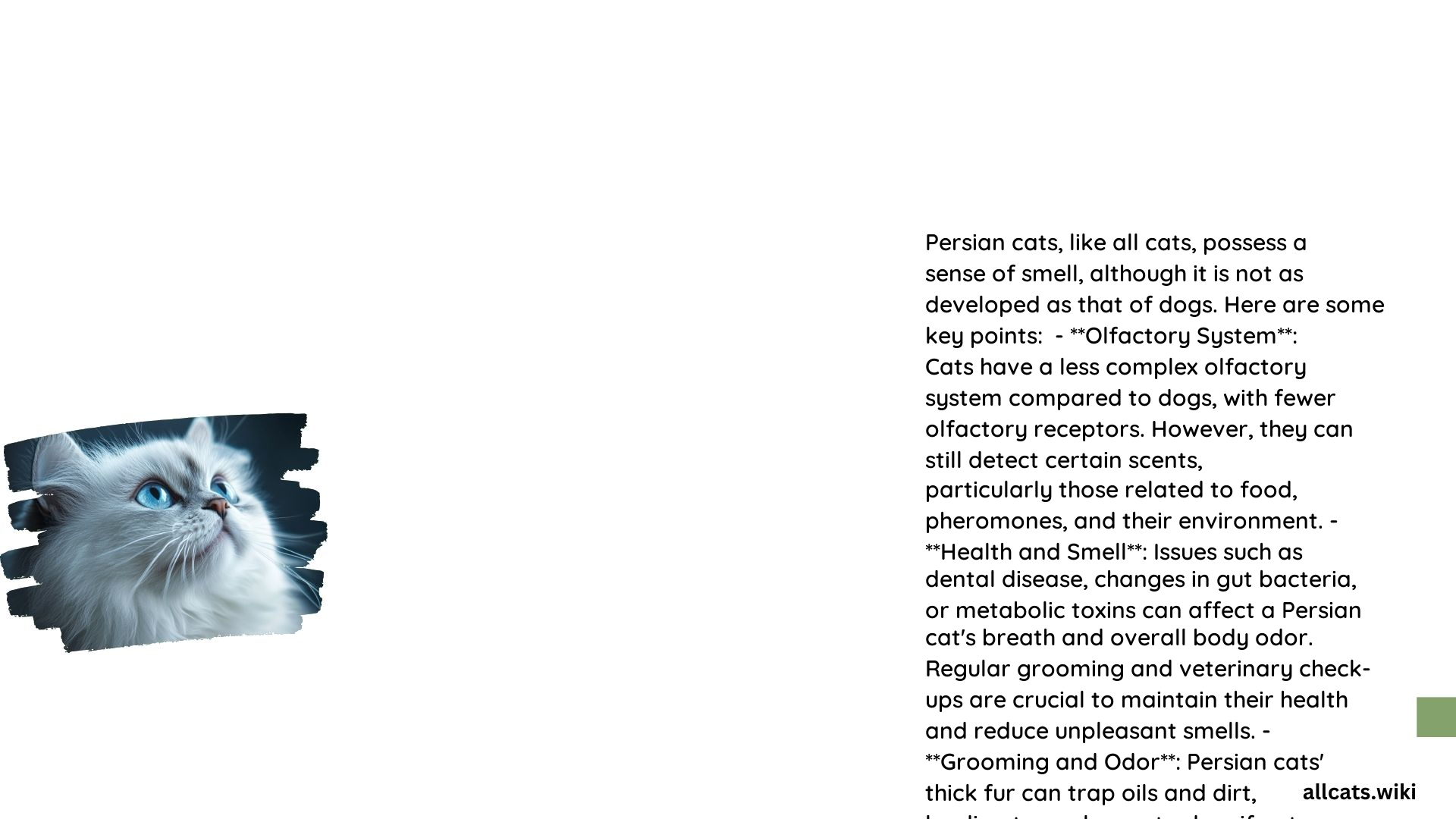Persian cats, known for their distinctive appearance and luxurious coats, are often admired for their unique characteristics. One aspect of their biology that is often overlooked is their sense of smell. In this comprehensive blog post, we will explore the olfactory capabilities of Persian cats, delving into their anatomical features, the strength of their sense of smell, their ability to detect various odors, and their sensitivity to different scents.
What is the Olfactory Anatomy of Persian Cats?

Persian cats, like all felines, possess a highly developed sense of smell. Their olfactory system is characterized by a large number of odor receptors in the nasal cavity. Cats generally have more than 200 million odor sensors in their noses, which is significantly more than humans, who have only about 5 million.
The anatomy of a Persian cat’s nose, though smaller than that of some other breeds, is still highly efficient. The small nose of Persian cats is capable of sniffing out far more than the human nose, allowing them to navigate their environment effectively.
Do Persian Cats Have a Strong Sense of Smell?

Persian cats, like other felines, have a strong sense of smell that is 14 times better than that of humans. This is due to the high number of odor receptors in their nasal cavities. While there are no breed-specific studies that quantify the olfactory abilities of Persian cats differently from other breeds, it is understood that all cats have a superior sense of smell compared to humans.
Can Persian Cats Detect Odors?
Persian cats can detect a wide range of odors, which helps them learn about their environment and communicate with other cats. They use their sense of smell to identify people, objects, and other animals. Cats are particularly sensitive to strong or unfamiliar scents, such as scented litter, other animals’ smells on their owners, or new furniture.
Are Persian Cats Sensitive to Smells?
Persian cats are highly sensitive to smells, which can significantly affect their behavior. Strong or unfamiliar scents can upset them. For example, if a cat encounters scented litter or an unfamiliar scent in their environment, it may cause them distress. This sensitivity is why it’s important to be mindful of the scents in their environment.
Recommendations for Products
Litter: Opt for unscented or low-odor litter to avoid upsetting your cat’s sensitive nose.
Cleaning Products: Use odor-free or mild cleaning products to maintain a neutral scent environment.
Toys and Bedding: Choose products with minimal or no strong scents to ensure comfort for your cat.
Creating an Environment
Minimize Strong Scents: Avoid placing strong-smelling items, such as cleaning supplies or perfumes, in areas where your cat spends most of its time.
Maintain Consistency: Keep the environment consistent in terms of scents to reduce stress and discomfort for your cat.
Introduce New Items Gradually: When introducing new furniture or items, do so gradually to allow your cat to become accustomed to the new scents.
Substances to Avoid
Strong Chemicals: Avoid exposing your cat to strong chemicals or cleaning agents, as these can be overwhelming and potentially harmful.
Perfumes and Colognes: Keep perfumes and colognes away from your cat, as these can be highly irritating to their sensitive noses.
Scented Foods: Be cautious with scented foods or treats, as some cats may find these overwhelming.
In conclusion, Persian cats possess a highly developed sense of smell, which is a crucial aspect of their biology and behavior. Understanding the olfactory capabilities of Persian cats can help owners create a comfortable and stress-free environment for their feline companions.
References
- PersianPurr: Can Persian Cats Smell?
- PAWS Chicago: Cat Senses
- Treasured Kittens: The Senses of Persian Cats.
